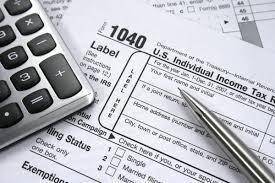Dear Savvy Senior,
I understand that a portion of my Social Security benefits may be taxable when I retire. Can you tell me how to calculate this?
Ready to Retire
Dear Ready,
Whether or not you’ll be required to pay federal income tax on your Social Security benefits will depend on your income and filing status. About 35 percent of Social Security recipients have total incomes high enough to trigger federal income tax on their benefits.
To figure out if your benefits will be taxable, you’ll need to add up all of your “provisional income,” which includes wages, taxable and non-taxable interest, dividends, pensions and taxable retirement-plan distributions, self-employment, and other taxable income, plus half your annual Social Security benefits, minus certain deductions used in figuring your adjusted gross income.
How to Calculate
To help you with the calculations, get a copy of IRS Publication 915 “Social Security and Equivalent Railroad Retirement Benefits,” which provides detailed instructions and worksheets. You can download it at IRS.gov/pub/irs-pdf/p915.pdf or call the IRS at 800-829-3676 and ask them to mail you a free copy.
After you do the calculations, the IRS says that if you’re single and your total income from all of the listed sources is:
- Less than $25,000, your Social Security will not be subject to federal income tax.
- Between $25,000 and $34,000, up to 50 percent of your Social Security benefits will be taxed at your regular income-tax rate.
- More than $34,000, up to 85 percent of your benefits will be taxed.
If you’re married and filing jointly and the total from all sources is:
- Less than $32,000, your Social Security won’t be taxed.
- Between $32,000 and $44,000, up to 50 percent of your Social Security benefits will be taxed.
- More than $44,000, up to 85 percent of your benefits will be taxed.
If you’re married and file a separate return, you probably will pay taxes on your benefits.
To limit potential taxes on your benefits, you’ll need to be cautious when taking distributions from retirement accounts or other sources. In addition to triggering ordinary income tax, a distribution that significantly raises your gross income can bump the proportion of your Social Security benefits subject to taxes.
How to File
If you find that part of your Social Security benefits will be taxable, you’ll need to file using Form 1040 or Form 1040-SR. You also need to know that if you do owe taxes, you’ll need to make quarterly estimated tax payments to the IRS, or you can choose to have it automatically withheld from your benefits.
To have it withheld, you’ll need to complete IRS Form W-4V, Voluntary Withholding Request (IRS.gov/pub/irs-pdf/fw4v.pdf), and file it with your local Social Security office. You can choose to have 7 percent, 10 percent, 12 percent or 22 percent of your total benefit payment withheld. If you subsequently decide you don’t want the taxes withheld, you can file another W-4V to stop the withholding.
If you have additional questions on taxable Social Security benefits call the IRS help line at 800-829-1040.
State Taxation
In addition to the federal government, 13 states – Colorado, Connecticut, Kansas, Minnesota, Missouri, Montana, Nebraska, New Mexico, North Dakota, Rhode Island, Utah, Vermont and West Virginia – tax Social Security benefits to some extent too. If you live in one of these states, check with your state tax agency for details. For links to state tax agencies see TaxAdmin.org/state-tax-agencies.
Send your senior questions to: Savvy Senior, P.O. Box 5443, Norman, OK 73070, or visit SavvySenior.org. Jim Miller is a contributor to the NBC Today show and author of “The Savvy Senior” book.

